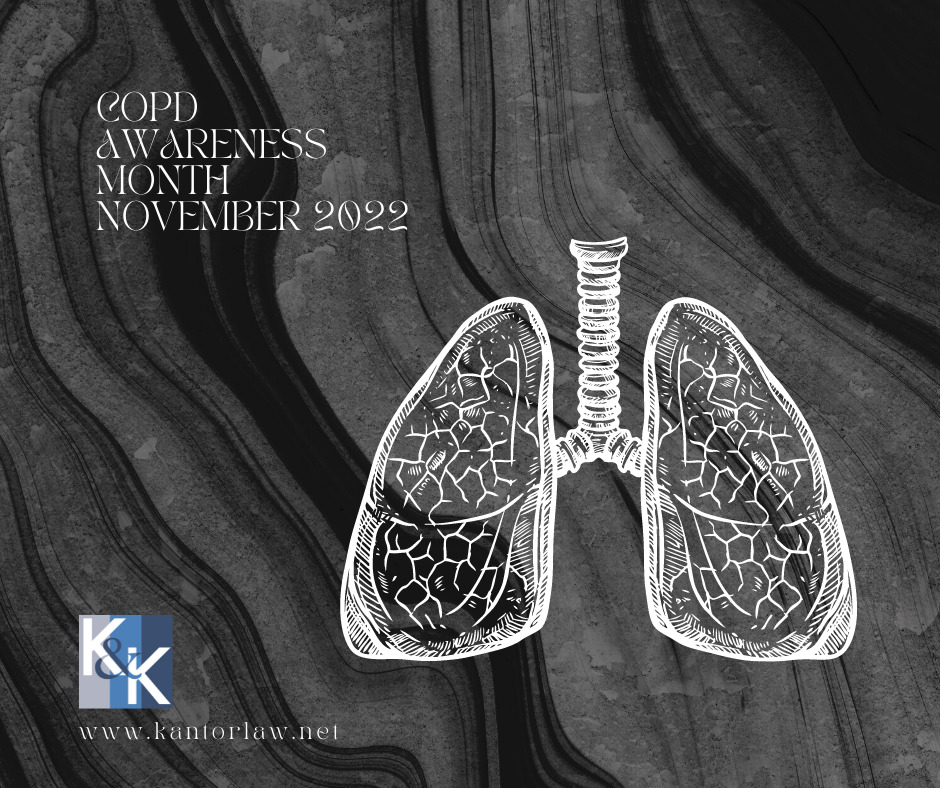
Did you know that 16 million U.S. adults have chronic obstructive pulmonary disease (COPD), and millions more are undiagnosed and unaware that they have the disease? COPD kills more than 150,000 people each year in the United States and more than 3.2 million people worldwide.
Each November, the COPD Foundation and its community increase the focus on building awareness for COPD. This year, the Foundation’s COPD Awareness theme is Lace-Up for Lungs: Let’s Outpace COPD.
What is COPD?
Chronic Obstructive Pulmonary Disease (COPD) is a term used to describe chronic lung diseases including emphysema, and chronic bronchitis. This disease is characterized by breathlessness. Some people with COPD also experience tiredness and chronic cough with or without mucus.
Chronic
This means that the disease lasts a long time and is always present. While the symptoms may take years to develop and the severity may differ at times, there is still much a person can do to slow the progress of the disease.
Obstructive
The ability to move air in and out of your lungs is blocked or obstructed. This is caused by swelling and extra mucus in the tubes of the lungs (airways) which carry air in and out.
Pulmonary
This means that the disease is located in your lungs.
Disease
Your lungs have some damage. But even though a cure hasn’t been found yet, the symptoms can be treated.
What are Signs and Symptoms of COPD?
Common symptoms of COPD develop from mid-life onwards, including:
- breathlessness or difficulty breathing
- tightness in the chest
- chronic cough, often with phlegm
- unusual tiredness
As COPD progresses, people find it more difficult to carry out their normal daily activities, often due to breathlessness. There may be a considerable financial burden due to limitation of workplace and home productivity, and costs of medical treatment.
During flare-ups, people with COPD find their symptoms become much worse and they may need to receive extra treatment at home or be admitted to a hospital for emergency care. Severe flare-ups can be life-threatening.
People with COPD often have other medical conditions such as heart disease, osteoporosis, musculoskeletal disorders, lung cancer, depression, and anxiety.
What causes COPD?
Most cases of COPD are caused by inhaling pollutants; that includes tobacco smoking (cigarettes, pipes, cigars, etc.), and second-hand smoke.
Fumes, chemicals, and dust found in many work environments are contributing factors for many individuals who develop COPD.
Genetics can also play a role in an individual’s development of COPD – even if the person has never smoked or has ever been exposed to strong lung irritants in the workplace.
How is COPD Diagnosed?
COPD is usually diagnosed through lung function testing such as spirometry. A spirometry test measures how well your lungs are working. It’s a simple and painless test that can help diagnose COPD. Your doctor may order additional tests to get a more complete picture of how your lungs are functioning.
How is COPD Treated?
While there is currently no cure for COPD, treatment can help slow the progression of the condition and control the symptoms. Treatments include:
- Stop smoking
- Inhalers and steroid medications
- Flu or pneumonia vaccines
- Pulmonary rehabilitation
- Oxygen therapy
- Surgery or a lung transplant
If you or someone you know is suffering from chronic obstructive pulmonary disease or any other illness, and you are being denied benefits by your insurer, please call Kantor & Kantor for a free consultation with one of our Insurance Lawyers or complete our online contact form.
We understand, and we can help.

